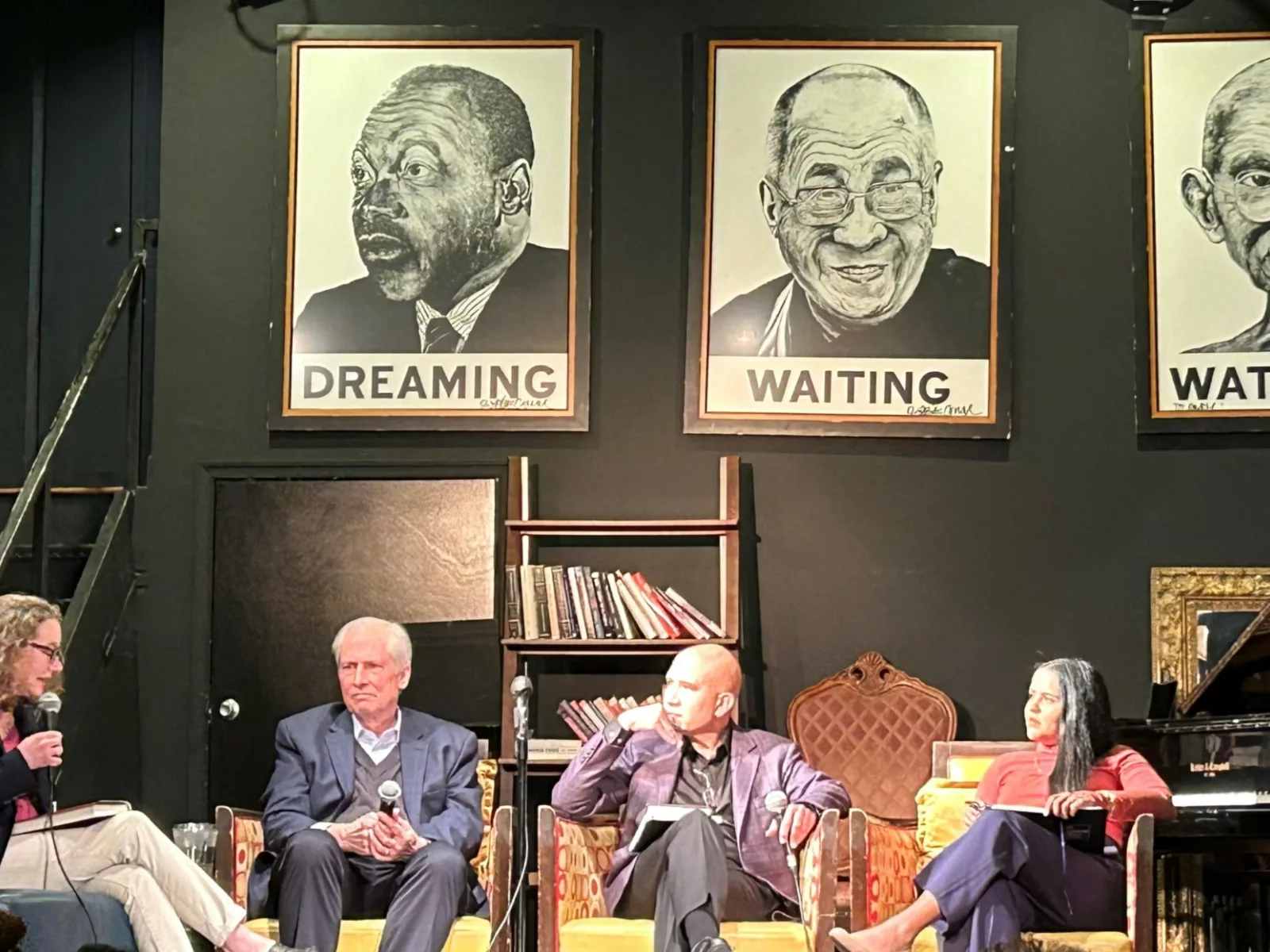When new statewide bail laws were enacted in New York, it came at a time the COVID-19 pandemic was about to upend all aspects of American lives — including its criminal legal system.
As lockdowns and social distancing forced people into their homes and first responders off the streets, these policies also had an unintended effect: gun violence.
Critics in New York were quick to cast blame on the state’s new bail laws as the root problem. Yet emerging data in the three years since the laws went into effect paint a clearer picture.
“If you’re looking for evidence that bail reform caused a rise in crime, you’d be coming up blank right now,” said Ames Grawert, senior counsel in the Brennan Center’s Justice Program.
An analysis coauthored by Grawert and published by the Brennan Center, “The Facts on Bail Reform and Crime Rates in New York State,” made three key findings about the state’s bail reform:
- There is no evidence linking bail reform to the 2020 – 21 crime increase
- Crime rose in jurisdictions both with and without bail reform
- Crime is complex, and policymakers should be wary of simplistic answers
Now, as the New York Legislature heads toward the end of its session, we spoke with Grawert about his findings, critics’ misinformation campaigns, and how providing more resources to social services can strengthen communities and steer people away from the criminal legal system.
This interview has been edited for length and clarity.

National Partnership for Pretrial Justice
What has your research shown about bail reform in New York?

Ames Grawert
I think the most important takeaway is that we’re still fairly early in the history of bail reform in New York. The law went into effect in January 2020, and we’re only now starting to get information on how the law works and how it’s interacted with crime rates.
There has never been good evidence that the law contributed to rising crime in New York. What critics have claimed is that bail reform led to an increase in shootings and an increase in violent crime. When people have called them out on those claims and asked for evidence to back them, their claims have fallen apart.
What we’re starting to see now is information that pushes back on that narrative. This information not only debunks the false narrative but also creates a different understanding of how the law is actually working.
The first analysis we have is from the Albany Times Union, which shows relatively few people being rearrested after being released because of the new bail laws.
The most interesting information is from the New York Criminal Justice Agency, a local nonprofit. Their online dashboard provides a look at the data on a very complex subject. What they look at is the percentage of people in the community who are released pretrial in a given month and who are rearrested in that same month. It’s one way to look at the complex question of pretrial detention and rearrest. What their dashboard shows is that specific rearrest metric has not changed significantly since bail reform was implemented in 2020. That’s a strong indication that the law did not lead to any increase in crime or violent crime.
These are the first analyses and both will be improved upon by future research. But if you’re looking for evidence that bail reform caused crime to rise, you’d be coming up blank right now.

National Partnership for Pretrial Justice
Recently, Gov. [Kathy] Hochul approved changes to the bail law. What are those and what impacts will they have?

Ames Grawert
These changes, among other things, clarified the rules under which judges can set bail for a repeat offense. The old law was that if you were released on your own recognizance for any felony or class A misdemeanor and then you committed another crime of the same severity that involved harm to a person or property, then a judge could set bail in your case even if they couldn’t before.
The new law expands that to include some weapon possession charges and allows judges to set bail even in repeat-offense cases even if the “second” offense occurred before arraignment. It appears to make clear that “harm to person or property” includes theft that isn’t “negligible,” which may be more of a clarification rather than a change to the law.
There are also a few other changes, such as judges are now required to consider things like criminal history when making pretrial release decisions in certain cases. So those are the changes legislators have gone with. As far as what those changes will do, I think is a really open question and it’s really hard to say how they will affect anything.

National Partnership for Pretrial Justice
On the topic of lawmakers and legislative changes, you have a really great line in your report I’d like you to expand on: “Crime is complex, and policymakers should be wary of simplistic answers.”

Ames Grawert
This dates back to an analysis that my colleagues at the Brennan Center did in 2016 called, “What Caused the Crime Decline.” They looked at a number of potential explanations for why crime decreased so dramatically from 1991 to around 2014. The report includes a number of findings, but one of the things they concluded is neither they, nor other social scientists, can account for roughly half of the “great crime declines.”
The precipitous drop in violence post 1991 is one of the more important sociological facts in recent history. It translates to an enormous amount of lives saved and violence averted relative to where the country was in 1990. And it’s still a phenomenon we don’t fully understand.
So the idea that we would fully understand statewide bail reform with just a year of hindsight, given what happened in 2020 — it doesn’t align with reality. We’re starting to get some ideas of what might have caused crime to increase, but all we’re seeing is a complex, multifaceted picture — guns seem to be a factor, as well as the social disruption of the pandemic. It would be very tough to attribute everything to a single factor, such as bail reform.
I don’t think that’s been a smart way to analyze crime historically with so little data, and certainly for what we experienced in 2020.
If you’re looking for evidence that bail reform caused crime to rise, you’d be coming up blank right now.Ames Grawert senior counsel in the Brennan Center’s Justice Program

National Partnership for Pretrial Justice
As lawmakers convene for this next legislative session, the state’s bail laws will obviously be a hotly debated topic. In your view, what changes — if any — should be made, or how should they go about addressing any changes to the law?

Ames Grawert
One thing we point to in our analysis was there are supposed to be “non-monetary” methods of securing someone’s reappearance for court, like supervised release. Those systems were very difficult to operate during the pandemic, which makes sense. Shoring up those services would be a good idea, to make sure that there are alternatives to bail that are effective and working and safe and consistent with human dignity. I think that would be a good place for lawmakers to look.
That doesn’t require revisiting the statute. That just requires making sure that the statute is implemented faithfully and that agencies running it are well funded. That is not easy, but it’s important.

National Partnership for Pretrial Justice
Speaking of services and human dignity, you note in your report the importance of addressing issues such as poverty, affordable housing, and mental health treatment. How would expanding resources to those areas help address public safety and reduce our reliance on jails?

Ames Grawert
That’s a long-term project. There are some sociologists who have noted that the growth of mass incarceration coincided with the dismantling of social safety net programs in the 1970s and ‘80s. Building safer and healthier communities means reinvesting in our communities to create more long term and stable forms of safety. Also, we can look at empowering communities to be the guardians of their own safety rather than resorting to the criminal legal system. That’s a more difficult challenge for policymakers to pin down and develop solutions. But I think it’s important and worth attempting.

National Partnership for Pretrial Justice
That sounds like changing the entire system.

Ames Grawert
We need solutions that address the problem in the short term and provide long-term stability for communities. One thing we’ve found promising are these community-focused initiatives called community violence intervention programs. The idea is that people who are credible messengers in their communities who are keyed into both an understanding of what’s happening in their backyard and are able to identify and head off situations before they become violent.

National Partnership for Pretrial Justice
That’s interesting because rather than relying on police patrols, where in some communities they’re viewed with heavy suspicion, especially communities of color, these communities are instead relying on people who have built trust and who residents may be more inclined to listen to.

Ames Grawert
Exactly. And the relationships these programs have with law enforcement are really complex and vary significantly from program to program. I spoke with one group who said they get tips from law enforcement, which supports their work and acknowledges their value, but under no circumstances will the group feed tips back to police. Because these people, they live and die — literally — based on their credibility with the community. It’s really complex work, and people who do this truly put their lives on the line. When these programs are done correctly, data shows they are pretty effective.
Read Ames Grawert’s op-ed in the New York Daily News: Bail Reform Isn’t Driving NYC’s Crime Increase


















